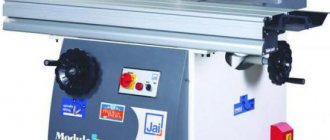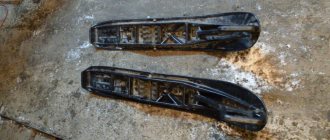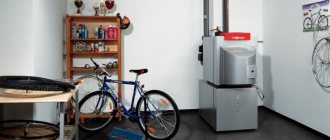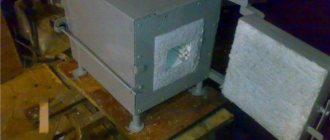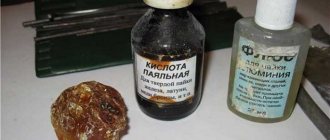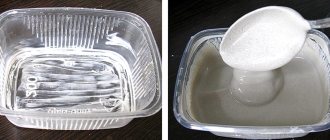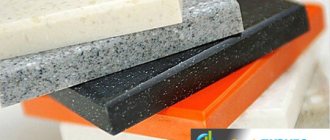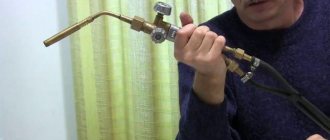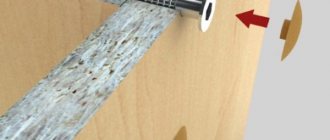To harden a spring means to subject it to heat treatment in order to increase the strength, elasticity, hardness and ductility of the product, which will ultimately affect the physical and chemical properties and service life. The essence of the process is heating to a temperature at which the metal structure transforms into a special state, and high-speed cooling in various environments, including cooling in air. The choice of hardening technology depends on the grade of steel from which the spring is made and the diameter of the wire. This operation is performed in industrial and home conditions.
A homemade spring is not recommended for use in devices operating under increased loads.
Do-it-yourself spring manufacturing and hardening technology
Almost every home craftsman knows that it is possible to make a spring from almost any wire and successfully use it in everyday life. Basically, there are no problems with making the part yourself. However, sometimes situations arise in which it is necessary to either make a spring of non-standard dimensions, or give it increased strength and elasticity. To do this, you should resort to heat treatment operations. It is quite possible to harden a spring at home. It goes without saying that a homemade part should not be used in particularly critical devices operating under increased load. For such purposes, it is recommended to use factory-made springs. But for home use in a device operating in a lightweight mode, the technology in question is quite suitable.
- Required tools and materials
- Features of the operation
- Sequencing
Types of springs
Springs are elastic parts, mainly used in industries such as mining, oil and gas, energy, mechanical engineering and machine tools, and others.
The most common types of them are:
- - Sprains. Under axial load, their length increases, whereas in the initial state the coils are in contact. They experience torsional and bending stresses.
- - Compression. Under axial load, their length decreases; in the initial state, the turns are located at a pitch distance (determined depending on the specifics of the application). They also experience torsional and bending stresses.
- — Torsion - the load is applied in a plane that is perpendicular to the axis of the product. They work to twist and exert a turning moment of force.
- - Bend. By slightly deforming, they can transmit great force.
Required tools and materials
In order to make and harden a wire spring with your own hands, you need:
- Steel wire. The diameter is selected based on the necessary characteristics of the future product.
- Ordinary gas burner.
- Metalworking tools: pliers, hammer, etc.
- Vise.
- Stove. This may be, if available, a special one or an ordinary household one.
Additional devices that are selected individually in accordance with the size and stiffness of the spring can facilitate the process of winding the spiral.
If the use and hardening is intended to be made from wire with a diameter of less than 2 millimeters, then it may not be preheated. It will bend without any problems without this operation. However, before starting winding, it is recommended to straighten it along its entire length and completely level it.
When using wire with a diameter of more than 2 millimeters, it should be burned before starting work. Without this operation, aligning and winding it will be problematic.
Cold coiling technology with quenching and tempering
The first stages of the technology coincide with the previous process. Changes begin at the heat treatment stage. It is carried out in several stages:
- Hardening. The workpiece is heated to a given temperature and held for 2 to 3 hours. Next, it is subjected to rapid cooling by immersing it in a container with mineral oil or saline solution. During the hardening stage, the workpieces must be in a horizontal position. This will avoid deformation
- Vacation. The workpiece is heated to 200-300° and kept for several hours to relieve internal stresses and improve elastic properties.
Further measuring and control operations are also carried out. The workpieces that have passed the inspection are sent for sandblasting to remove scale. If necessary, shot blasting should also be done to increase the strength of the surface layer of the metal.
The process is completed by applying a protective coating.
Features of the operation
- The right foundation is the key to success. In factory conditions, an alloy of non-ferrous metals (65G, 60HFA, 60S2A, 70SZA, Br. B2), alloy or carbon steel is used for production. During home production, the optimal base will be an old spring of the required diameter.
- A special furnace is best suited for annealing. If this is not available, brick or metal will do.
- For cooling after heating, it is recommended to use transformer oil. If it is not available, a spindle will do.
Sequencing
1. Before tempering the spring wire, you should check the base material and make sure that the wire used is carbon steel.
2. The annealing procedure, as mentioned earlier, can add plasticity. This will make the process of alignment and winding onto the mandrel easier. You can use a special oven or any suitable oven for this. In everyday life, it is possible to harden in the most suitable structure (metal or brick). To do this, a regular fire is lit and then the future spring is placed in the coal. After heating the workpiece red-hot, the wire must be removed and allowed to cool naturally. The cooled wire will be much softer and you can work with it comfortably.
3. The softened wire should be completely aligned and begin winding onto a mandrel of a suitable diameter. During the procedure, you need to control the tight arrangement of the turns to each other. To make it easier, you can use a screwdriver.
4. To impart the required elasticity, hardening will be required. Thanks to this heat treatment, the part is harder and more durable. Hardening springs involves heating them to a temperature of 830 to 870 degrees. To do this, you can use a gas burner. Earlier we talked about hardening metal at home.
It is unlikely that you will find a suitable thermometer at home that can accurately determine the temperature of a part. Therefore, you can navigate by the color of the metal. When the required temperature is reached, the workpiece will turn light red. We recommend watching a video with a detailed description of the heating temperature. After this, the spring is placed in a cooling medium (oil).
5. Afterwards, the hardened spring must be kept in a compressed state. This requires from 20 to 40 hours.
6. Finally, process and adjust to the required dimensions.
Correct implementation of such hardening will allow you to successfully use the spring in home mechanisms.
Hardening technique
Simply put, hardening technology consists of two actions - heating the sample to a high temperature and cooling it.
Just don’t assume that everything is elementary, because groups of metals differ in their unique structure and characteristics.
Do-it-yourself heat treatment of metal is justified if:
The price of professional hardening of 1 kg is 100-200 rubles. Hardening small parts will cost less. The price for this service ranges from 6 to 20 rubles.
If you harden equipment at home, it is important to know some of the subtleties of this process. Heating requires uniformity, it must occur without the appearance of black or blue spots on the object
Under no circumstances should the sample be heated to extreme levels.
Heating requires uniformity; it must occur without the appearance of black or blue spots on the object. Under no circumstances should the sample be heated to extreme levels.
The fact that the product is heating up correctly will be indicated by its coloring in a bright red color.
Video:
For hardening a metal object such as a drill, equipment such as an electric furnace or thermal oven, as well as a blowtorch and a large fire are suitable.
What is more suitable - a furnace, an electric furnace or an open fire depends on the temperature required by the type of metal being processed.
When it is necessary to harden not the entire surface of a metal object, but only a certain place, jet hardening is used. It assumes that a stream of cold water is directed at the object pointwise.
The cooling method for a drill, screwdriver, chisel or crimp may vary. It can be carried out in several stages, one-time and abruptly, or gradually. It all depends on the type of metal.
If you plan to carry out an operation with one cooler, then special equipment, such as a bucket or barrel, is prepared. Even a bath is suitable for this.
When a two-stage cooling scheme is needed to lower the temperature of a metal object, two different media are used. This procedure also ensures the tempering of the metal.
So, first, drills or disk parts are cooled with water, then with oil, which can be machine or mineral.
Cooling with oil is carried out secondarily, since there is a risk of ignition due to high temperature.
Temperature conditions and other hardening indicators are reflected in the table below.
How to make a spring at home with your own hands
Most often, the question of how to make a spring yourself, using improvised means, does not arise. However, there are situations when a spring of the required diameter is not at hand. It is in such cases that the need arises to make this element with your own hands.
Making a small spring is quite possible
Of course, springs for critical mechanisms operating under intensive conditions are best manufactured in production conditions, where it is possible not only to select correctly, but also to comply with all the parameters of the technological process. If you need a non-standard spring for use in a mechanism that will be operated in a gentle mode, then you can make it at home.
Heat treated springs for corrosion protection
Heat treatment of springs is a generalized name for operations such as heating, holding and cooling of these products.
The main goal of such processing is to obtain the specified parameters and properties of elastic products, which is achieved by changing the internal structural structure of the metal alloys used in each specific case. To achieve this goal, steels/alloys are heated to a certain temperature, maintained under such conditions for a precisely specified time and cooled, depending on the technology, in a fast or slow way.
Such processing may be an intermediate operation in the technological process of manufacturing elastic parts, in which case it serves to improve the results of subsequent operations (pressure processing, cutting, etc.). If such processing is the final stage of the technological process, then it is carried out to ensure the specified properties of each product.
What you need
To make your own spring, prepare the following supplies and equipment:
- steel wire, the diameter of which should correspond to the cross-sectional size of the turns of your future spring product;
- a regular gas burner;
- a tool that every locksmith workshop must have;
- bench vice;
- a stove, which can also be used as a heating device for household purposes.
It is easier to wind a spiral using devices, the design of which depends on the size and stiffness of the spring
The wire, if its diameter does not exceed 2 mm, does not need to be subjected to preliminary heat treatment, since it is easy to bend without it. Before winding such wire onto a mandrel of the required diameter, it must be unbent and carefully aligned along the entire length of the winding.
When choosing the diameter of the mandrel, you should take into account the size of the spring that you are going to make at home. To compensate for the elastic deformation of the wire, the diameter of the mandrel is chosen slightly smaller than the required size of the internal cross-section of the future product.
Coil spring winding device
If the diameter of the wire from which you are going to make a spring with your own hands is more than 2 mm, it must first be annealed, since without such a procedure it will be difficult to align it and wind it onto the mandrel.
Cold coiling technology without hardening
First you need to do preparatory operations. Before a workpiece is wound from wire, it is subjected to a patenting procedure. It consists in heating the material to the plasticity temperature. This operation prepares the wire for the upcoming change in shape.
During the winding operation the following parameters must be maintained:
- External diameter of the product (for some parts the internal diameter is standardized).
- Number of turns.
- Winding pitch.
- The total length of the part, taking into account subsequent operations.
- Compliance with the geometry of the end turns.
Cold coiling without tempering
Next, the end turns are ground down to a flat state. This must be done to ensure high-quality support for other structural parts, to prevent their destruction and the spring from slipping out.
The next stage of the technological process is heat treatment. Cold coiling of springs involves only tempering at low temperatures. It allows you to increase elasticity and relieve mechanical stresses that arise during winding.
It is extremely important to strictly adhere to the design heat treatment schedule, carefully controlling temperature and holding time.
After heat treatment, it is necessary to carry out test and control operations.
Further, if necessary, protective coatings can be applied to prevent corrosion. If they were applied by galvanic method, the products are reheated to reduce the hydrogen content in the surface layer.
Step-by-step instruction
The first thing you need to do if you are going to make a spring with your own hands is to select the material for such a product. The optimal material in this case is another spring (the main thing is that the diameter of the wire from which it is made matches the cross-section of the coils of the spring that you need to make).
By selecting material from an old spring, you will be sure that the wire is made of hardened high carbon steel
Annealing the wire for the spring, as mentioned above, will allow you to make it more flexible, and you can easily align it and wind it on the mandrel. To perform this procedure, it is best to use a special stove, but if you do not have one at your disposal, then you can use any other device that heats wood.
In such a stove you need to light birch wood and, when it burns down to coals, put a spring in it, the wire from which you are going to use. After the spring is red-hot, the coals must be moved to the side and the heated product allowed to cool along with the stove. After cooling, the wire will become much more flexible, and you can easily work with it at home.
The wire that has become soft should be carefully aligned and begin to be wound onto a mandrel of the required diameter. When performing this procedure, it is important to ensure that the turns are located close to each other. If you have never winded springs before, you can first watch a training video, which is easy to find on the Internet.
You can use a screwdriver to wind a small spring.
In order for your new spring to have the required elasticity, it must be hardened. Heat treatment such as hardening will make the material harder and more durable. To perform hardening, the finished spring must be heated to a temperature of 830–870°, for which you can use a gas burner. You can determine that the required hardening temperature has been reached by the color of the hot spring: it should turn light red. To accurately determine this color, also rely on the video. After heating to the required temperature, the spring must be cooled in transformer or spindle oil.
Hardening steel over an open fire
Shock absorber support
It is possible to harden metal at home. For an easy and useful hardening process, you need to light a fire and prepare two large containers. There should be a lot of hot coals in the fire.
Diesel or motor oil is poured into one container, clean water, preferably from a well, is poured into the other. You should first prepare a tool with which you will need to hold the hot product.
It is advisable to find blacksmith pliers, but if they are not among the tools, you can arm yourself with something else similar to pliers.
When the preliminary work is done, metal drills or other objects are placed in the very center of the flame, that is, on hot coals.
Rich white coals are hotter than others
It is important to watch the hardening process - the flame should be crimson, not white. If the fire is painted in the last color, then there is a threat of overheating and even burning of the metal
It is necessary that the color is distributed evenly across the entire area of the fire. Black spots should not appear on the edge of the product that is being hardened.
And if the metal turns blue in places, this indicates that the material has softened too much and become too plastic. This should not be allowed under any circumstances.
Therefore, the process requires increased care, because you can overdo it and heat the ax blade white-hot.
When the metal equipment is heated in the fire, it is time to remove it from the high heat.
A hot object must be lowered into a container of oil many times with a frequency of 3 seconds, gradually increasing this period of time.
You cannot hesitate with these actions; you need to carry out operations to harden the metal edge quickly and sharply.
Next, the object is immersed in a bucket filled with water, which will have to be shaken a little.
At this stage, do not forget to be careful, as oil droplets on a knife or ax may burst into flames if they end up in water. The table shows how to correctly and incorrectly immerse various parts, including drills and disc cutters, in water:
The table shows how to correctly and incorrectly immerse various parts, including drills and disc cutters, in water:
Very often there is a need to harden drills. It is not recommended to immerse thin long elements flat into water, otherwise the lower layer of metal, cooled first, will shrink.
Video:
Drills should be lowered into the liquid with the thicker end.
If you follow all the rules and precautions, then hardening yourself will not seem like a complicated and dangerous procedure. It will bring the desired guaranteed effect
But sometimes at home you have to harden steel equipment or melt non-ferrous metal. Such operations require extremely high temperatures, 700-900 degrees.
And only a muffle furnace or an electric furnace can heat metal objects to this level. You can make a muffle furnace yourself. It is unlikely that you can make an electric oven at home.
how to make a spring?
The priest had it. In short, there was a tricky spring, but along the way I fell in love with it. It’s impossible to find another one, you have to do it. I tried to bend it out of an ordinary twisted spring, but it didn’t work out very well. After annealing the workpiece, bending is more fun, but you need to heat it up. Here’s the question: how to properly harden a spring at home with a minimum of heating equipment. The diameter of the rod is 1.5 mm, the overall size of the spring is 40 mm X 15 mm (in one plane). Help whoever can

